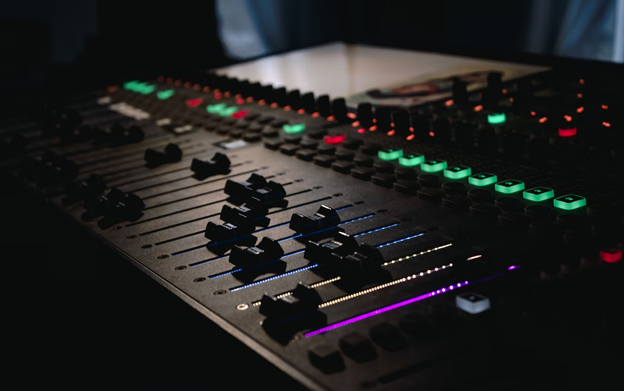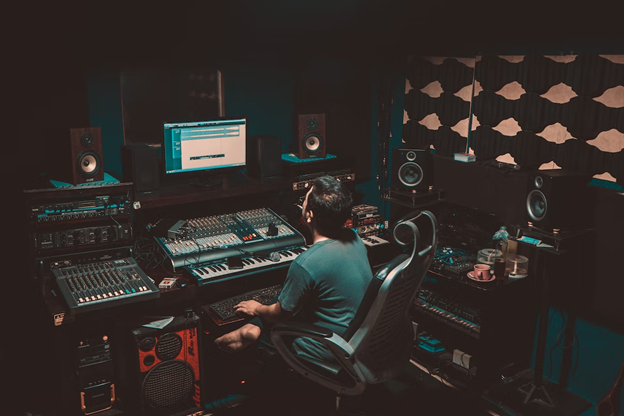Useful Music Recording Studio Setup Tips For Beginners
Useful Music Recording Studio Setup Tips For Beginners

Are you thinking of setting up your own music recording studio at home? If so, you're in for a lot of fun - and a lot of hard work! A home studio can be a great way to improve your music skills and create your own music. But if you're not prepared, you could quickly find yourself overwhelmed. In this article, we will discuss some useful tips for setting up your own music recording studio at home. By following these tips, you'll be well on your way to creating great-sounding recordings!
Know what you need and make a budget
The first step is to figure out what exactly you need for your studio. Do you want to record vocals? Instruments? Both? What kind of music do you want to produce? These are all important questions that will help guide your purchase decisions. Once you know what you need, it's time to start budgeting for your studio. If you're on a tight budget, you may need to make some compromises. But as long as you know what you need, you'll be able to find the right gear to fit your budget. Namely, if you want to improve a recording’s audio quality, you can use Adobe Premiere Pro to add audio effects and make various changes. Namely, even if your gear is high-quality, the recording environment itself can greatly affect the sound. So, if you’re serious about music recording, we suggest you dedicate a specific room in your house to it and use acoustic treatments to achieve the best results.
Choose the right room
The next step is to choose the right room for your studio. Ideally, you want a room that is acoustically treated. This means that the room has been designed to reduce echoes and other sound reflections. If you can't find a pre-treated room, you may need to treat the room yourself - or choose a different location for your studio. The most important thing is that you choose a quiet room where you won't be disturbed while you're working.
For instance, if you want to avoid sound reflections and echoes, you should hang blankets on the walls or use acoustic panels. Also, make sure to declutter the room as much as possible and remove anything that could reflect sound waves and create noise.
Set up your gear
Now it's time to set up your gear. This is where things can get a bit overwhelming, but don't worry - you can do it! Just take your time and be careful as you set up your equipment. If you're not sure how to do something, there are plenty of resources available online or in your local music store.

One way to set up your gear is to start with your computer. If you're planning on doing a lot of recording, you'll need a good audio interface. This will allow you to connect your microphones and instruments to your computer. Once you have your audio interface set up, you can begin setting up your microphones. Make sure to place them in the right position to get the best sound possible.
After your computer and audio interface are set up, it's time to start setting up your instruments. If you're recording electric guitars, you'll need an amplifier. Make sure to position the amplifier in a way that won't disturb your other equipment. For acoustic instruments, you may need to use a microphone to capture the sound. Again, make sure to position the microphone correctly to get the best sound possible.
Insulate the room
Once you have all of your gear set up, it's time to start insulating the room.
This will help reduce noise from outside sources and make sure that your recordings are as high-quality as possible. There are a few different ways to do this, but one of the most effective is to use soundproofing foam. This foam will absorb sound and help reduce echoes in the room. Another way to insulate the room is to use heavy curtains or blankets to block out noise.
Start recording!
Once you've set up your studio and gear, it's time to start recording! This is the fun part - but it's also where things can get tricky. Just take your time, experiment, and most importantly, have fun! With a little practice, you'll be recording great-sounding tracks in no time. And if you notice that something isn't sounding quite right, don't be afraid to make changes to your setup. With a little trial and error, you'll be able to get your studio to sound just the way you want it.
Nevertheless, we understand that not everyone has the budget or space for a professional studio. So, in this article, we'll give you some tips on how to set up a music recording studio in your home. By following these tips, you'll be able to get great-sounding recordings without spending a fortune.